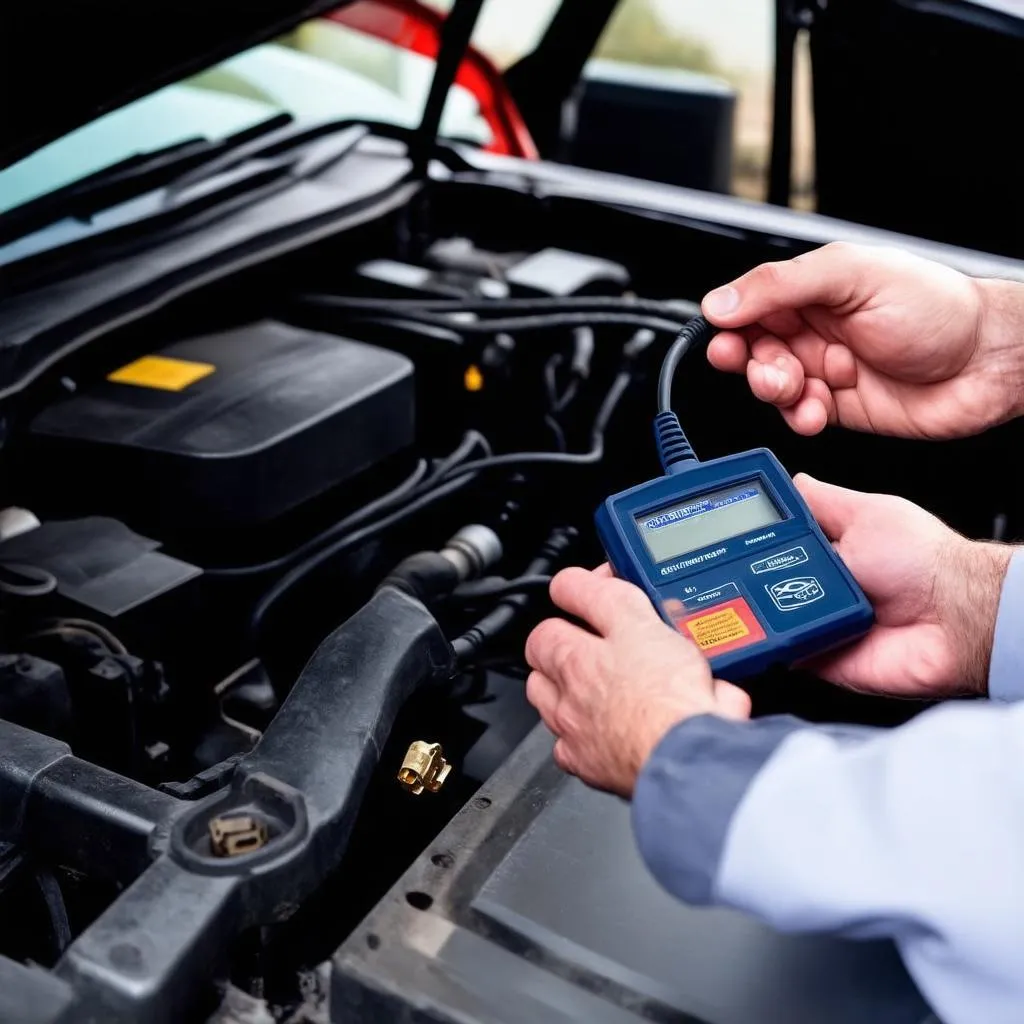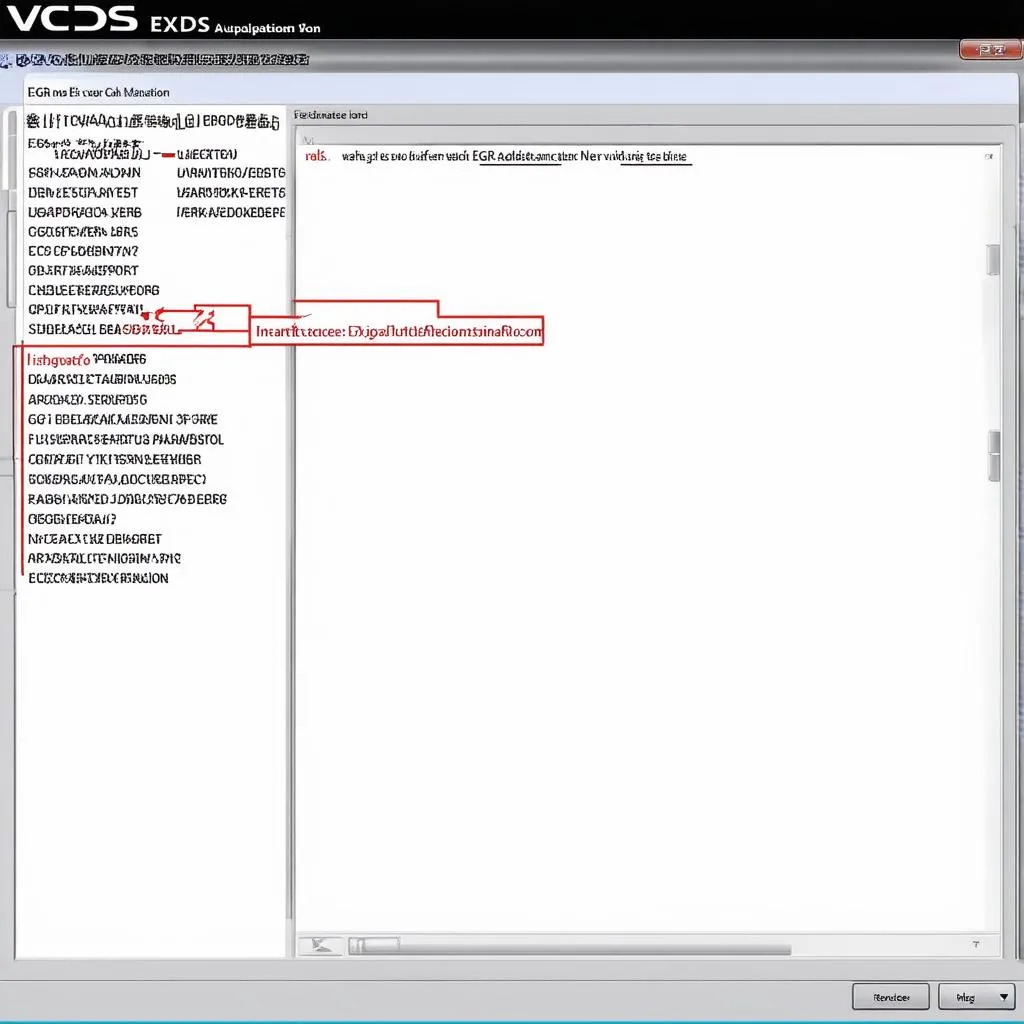EGR Adaptation VCDS: A Comprehensive Guide for Car Owners and Mechanics
“A journey of a thousand miles begins with a single step,” goes the saying. And for car owners, that first step on the road to a smooth and efficient engine can be understanding the intricate workings of the EGR system. The EGR system, or Exhaust Gas Recirculation system, plays a crucial role in controlling emissions and improving fuel economy. And in today’s world of complex electronics, ensuring proper EGR function often involves using advanced diagnostic tools like VCDS. This guide dives deep into the world of “Egr Adaptation Vcds,” exploring its meaning, its importance, and the practical steps involved in adapting your vehicle’s EGR system using VCDS.
Understanding EGR Adaptation VCDS
What is EGR Adaptation?
EGR Adaptation, simply put, is the process of “teaching” your car’s engine control unit (ECU) how to operate the EGR valve optimally. The EGR valve controls the amount of exhaust gas that is recirculated back into the engine. This recirculated exhaust gas helps to reduce combustion temperatures, thereby lowering NOx emissions. However, as your car ages, the EGR valve can become clogged or worn, resulting in a decrease in its efficiency. This can lead to issues like engine misfiring, reduced power, and even the dreaded “check engine” light.
Why is EGR Adaptation Needed?
Think of your car’s ECU like a brain that’s constantly learning and adapting. When you change the EGR valve, replace it, or even just clean it, the ECU needs to “learn” the new characteristics of the valve. EGR Adaptation is the process of updating the ECU’s “memory” to account for these changes. It ensures the EGR valve is working properly and the ECU is providing the optimal amount of exhaust gas recirculation to meet emission standards.
What is VCDS?
VCDS, short for “VAG-COM Diagnostic System,” is a powerful diagnostic tool specifically designed for Volkswagen, Audi, Skoda, and Seat vehicles. It allows car owners and mechanics to access the ECU and perform various functions, including reading fault codes, clearing codes, and adjusting various parameters. EGR Adaptation is one such function that can be performed using VCDS.
Why Use VCDS for EGR Adaptation?
VCDS offers a high level of control and precision when it comes to adapting your car’s EGR system. It provides a structured and standardized approach to the process, ensuring that the adaptation is performed correctly and safely. VCDS also provides detailed information about the adaptation process, making it easier to understand what is happening and identify any potential issues.
How to Perform EGR Adaptation Using VCDS
Step 1: Gather Your Supplies
You’ll need a VCDS cable and the VCDS software installed on your computer. Make sure you have a recent version of the software to ensure compatibility with your vehicle.
Step 2: Connect Your VCDS Cable to Your Vehicle
Connect the VCDS cable to your car’s diagnostic port, usually found under the dashboard. Start your car and allow it to warm up to operating temperature.
Step 3: Access the EGR Adaptation Menu
Open the VCDS software and select your car’s model and year. Navigate to the “Engine” module. Within the Engine module, locate the “EGR Adaptation” section.
Step 4: Follow the VCDS Instructions
VCDS will provide specific instructions for your vehicle’s model. These instructions may vary depending on the year and engine type. The process often involves cycling the engine through specific speeds and loads while the VCDS software monitors and adjusts the EGR valve’s position.
Step 5: Complete the Adaptation Process
Follow the on-screen prompts from VCDS. The adaptation process may take several minutes to complete.
Step 6: Clear Any Fault Codes
Once the adaptation is complete, use VCDS to clear any fault codes that may have been present.
Important Notes:
- Ensure that your vehicle’s EGR valve is clean and in good working order before performing EGR Adaptation.
- Some vehicles may require a specific sequence of steps for EGR Adaptation. Refer to your vehicle’s service manual or consult with a qualified mechanic if you are unsure about the correct procedure.
- Always use caution when working with electrical systems and diagnostic tools. If you are not comfortable with the process, it’s best to seek professional assistance.
Benefits of EGR Adaptation
- Improved Fuel Economy: By optimizing the EGR valve’s function, EGR Adaptation can help to improve fuel efficiency, saving you money on gas.
- Reduced Emissions: A properly adapted EGR system helps to reduce harmful emissions, contributing to a cleaner environment.
- Enhanced Engine Performance: EGR Adaptation can help to resolve issues like engine misfiring and reduced power, restoring your vehicle’s performance to optimal levels.
- Prevents Future Issues: By addressing potential EGR issues early, EGR Adaptation can help to prevent more serious problems down the line.
Frequently Asked Questions
Q: How often should I perform EGR Adaptation?
A: EGR Adaptation should be performed whenever you replace, clean, or adjust the EGR valve. It’s also a good idea to perform EGR Adaptation periodically, even if the valve is working properly. The recommended interval varies depending on the vehicle’s make, model, and driving conditions.
Q: Can I perform EGR Adaptation myself?
A: While it’s possible to perform EGR Adaptation yourself with the help of VCDS, it’s important to be comfortable working with diagnostic tools and understand the specific procedure for your vehicle. If you’re not confident in your abilities, it’s best to seek professional assistance from a qualified mechanic.
Q: What if EGR Adaptation doesn’t fix the problem?
A: If EGR Adaptation doesn’t resolve the issue, it could indicate a more serious problem with the EGR system, such as a faulty EGR valve, a clogged EGR cooler, or a problem with the ECU. In such cases, it’s essential to diagnose the root cause of the issue and seek professional repair.
Q: Are there any specific vehicle models that require EGR Adaptation?
A: EGR Adaptation is typically required for vehicles equipped with a diesel engine, particularly those manufactured by Volkswagen, Audi, Skoda, and Seat. However, certain gasoline engines may also have EGR systems that benefit from adaptation.
Cardiagxpert: Your Partner in Automotive Diagnostics
At Cardiagxpert.com, we understand the importance of reliable and affordable diagnostics. Our team of expert mechanics provides comprehensive guidance and support, helping you navigate the complex world of automotive diagnostics. We offer a wide range of resources, including informative articles, tutorials, and troubleshooting tips.
Need help with VCDS or EGR Adaptation? Don’t hesitate to contact us via Whatsapp: +84767531508. Our team is available 24/7 to assist you.
Explore More:
Let’s Discuss:
Do you have any questions about EGR Adaptation or VCDS? Share your thoughts and experiences in the comments below. We’d love to hear from you!
Remember: A well-maintained and properly adapted EGR system is key to a smooth and efficient driving experience. Take care of your car, and it will take care of you.
 EGR Adaptation VCDS
EGR Adaptation VCDS
 VCDS Software
VCDS Software
 EGR Valve
EGR Valve
